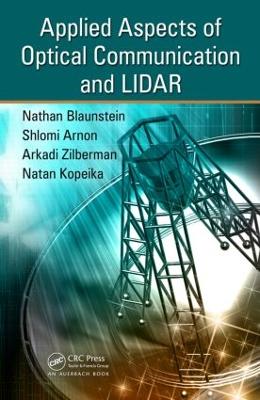Exploring the practical aspects of atmospheric optical communication and light detection and ranging (LIDAR), Applied Aspects of Optical Communication and LIDAR details the role of atmospheric structures in propagation phenomena that influence the transmission of optical signals through perturbed atmospheric communication channels. It examines numerous situations in over-the-terrain atmospheric communication channels, including the effects of natural phenomena and the corresponding features (turbulences and hydrometeors) on optical ray propagation.
Bridging the gap between the parameters of optical communication links and signal information data streams, this concise reference addresses line-of-sight (LOS) as well as obstructive non-line-of-sight (NLOS) propagation conditions. It also:
- Details the main characteristics of optical communication channels
- Introduces the quasi-regular gaseous atmosphere
- Describes numerous situations in the atmospheric communication channel
- Explains the main characteristics of optical communication channels
Complete with parameters for information data streams, the text also provides time-saving suggestions for determining which optical devices will work best for minimizing the deleterious effects of natural atmospheric phenomena. Whether you’re a researcher, an engineer, or student—this book provides you with the practical understanding required to use LIDAR to investigate all forms of atmospheric phenomena and to learn how to accurately predict primary parameters of atmospheric optical channels.
- ISBN10 1420090402
- ISBN13 9781420090406
- Publish Date 28 December 2009 (first published 1 January 2009)
- Publish Status Active
- Publish Country GB
- Publisher Taylor & Francis Ltd
- Imprint Auerbach Publishers Inc.
- Format Hardcover
- Pages 280
- Language English
